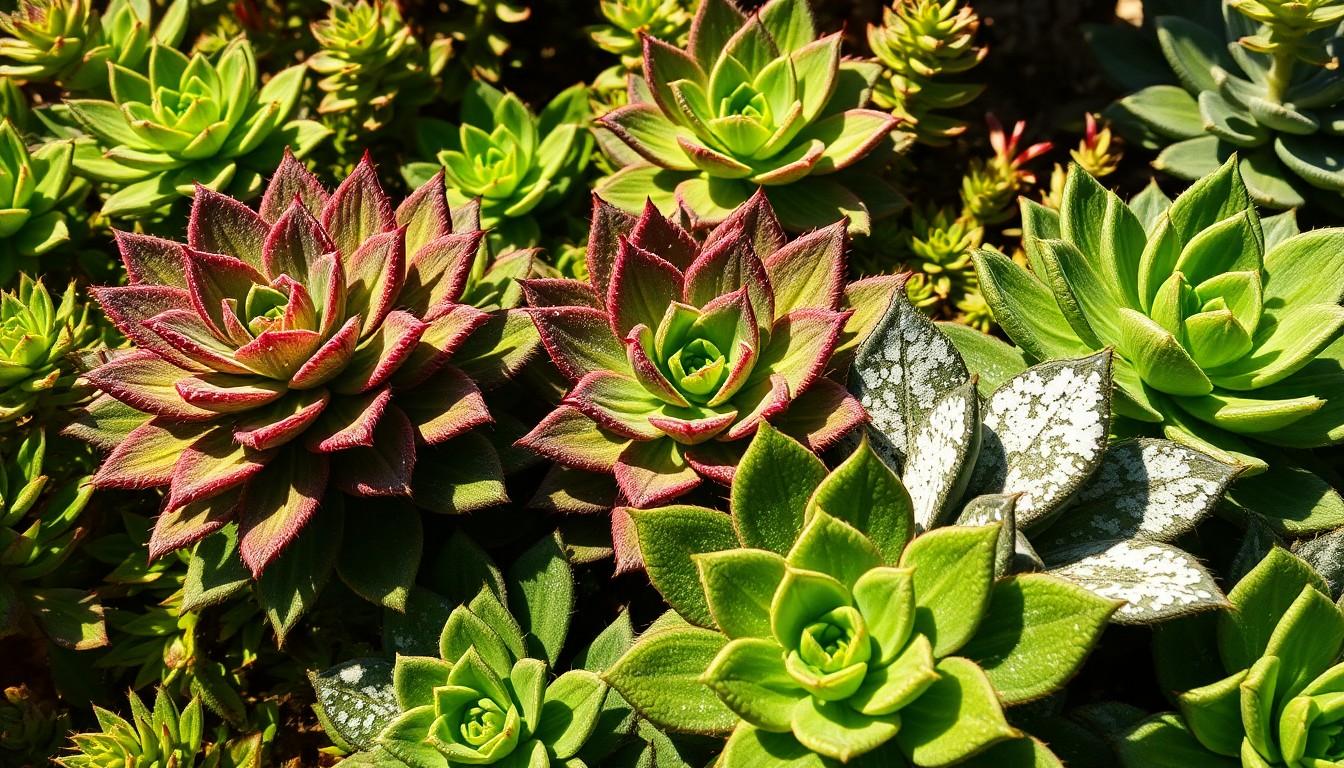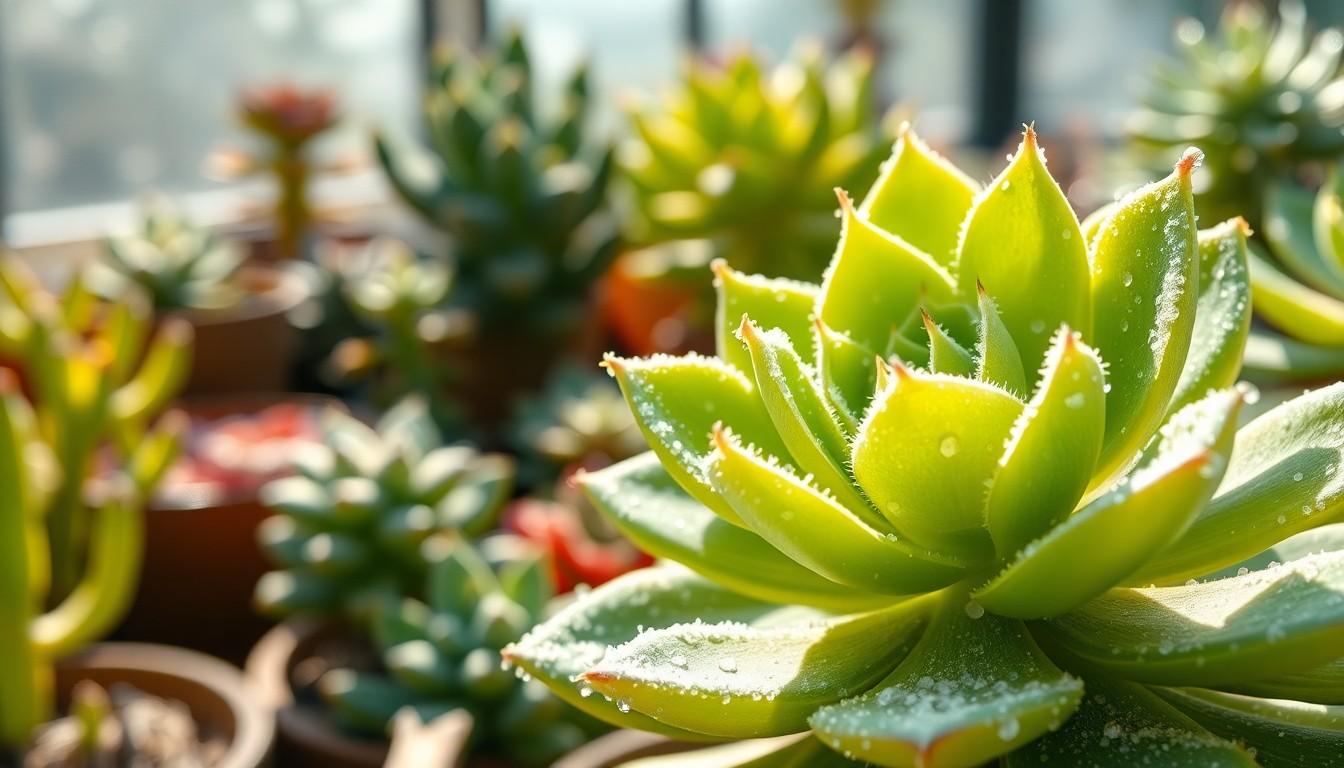Succulents are the rock stars of the plant world—low maintenance, vibrant, and oh-so-trendy. But what happens when these green darlings start looking more like they’ve been dusted with powdered sugar? Enter powdery mildew, the uninvited guest that crashes the succulent party and leaves a not-so-funny mess behind.
Overview Of Powdery Mildew On Succulents
Powdery mildew appears as a white, flour-like coating on succulent leaves. This fungal disease thrives in warm, humid conditions, often impacting plants indoors and outdoors. Symptoms include reduced leaf vigor and stunted growth. Proper identification of powdery mildew is crucial for early intervention.
Common causes involve overcrowding plants, excessive humidity, and insufficient airflow. Poor watering practices can also contribute, particularly if plants remain wet for extended periods. Striking a balance between moisture and dryness helps prevent mold formation.
Common succulent types affected include Echeveria, Sedum, and Aloe. Understanding their growing conditions makes it easier to spot potential mildew issues early. Cultural practices such as proper spacing and adequate light levels benefit overall plant health.
Treatment options vary widely. Organic fungicides provide a safe solution for home gardeners concerned about chemical use. Additionally, removing affected leaves limits the spread of the fungus. Regular monitoring and immediate action prove effective in controlling outbreaks.
Maintaining a clean environment enhances resilience against powdery mildew. Regularly cleaning pots and tools reduces the likelihood of spores spreading. Healthy succulents exhibit better resistance against various pathogens, including powdery mildew.
Staying vigilant and understanding the environmental factors leads to better succulent care. Observing changes in plants encourages timely responses, ensuring vibrant, healthy growth.
Causes Of Powdery Mildew

Powdery mildew on succulents arises from various factors. Understanding these causes is crucial for effective management.
Environmental Factors
High humidity levels often create a favorable environment for powdery mildew. Warm temperatures combined with poor airflow increase the likelihood of infection. Overcrowded plants may block air circulation, allowing moisture to accumulate. Outdoor plants in shaded areas might also suffer, as these tend to trap humidity. Inadequate sunlight reduces a plant’s resilience against fungal growth. Maintaining proper spacing between succulents and ensuring exposure to direct sunlight can mitigate these environmental risks.
Plant Health Factors
Weak or stressed plants are more susceptible to powdery mildew. Overwatering causes excess moisture, contributing to a favorable habitat for fungal spores. Nutrient deficiencies impact a plant’s overall health, diminishing its ability to fight infections. Certain succulent species, like Echeveria and Sedum, show increased vulnerability to mildew under stress. Healthy plants, receiving balanced nutrition and appropriate watering, exhibit greater resistance. Regular health assessments help identify physical stress signals early, reducing the chance of infection.
Symptoms To Watch For
Identifying symptoms of powdery mildew on succulents helps in early intervention. Recognizing the signs leads to better plant health overall.
Visual Indicators
White, flour-like spots on leaves serve as the most apparent visual indicator of powdery mildew. This powdery coating can appear as small patches initially, but it spreads quickly across the surface. Leaves may exhibit yellowing or browning around the edges as the infection progresses. Some plants develop a distorted appearance as the mildew takes hold. These changes, if overlooked, signal a decline in plant health.
Growth Impact
Growth impact of powdery mildew can significantly hinder succulent vitality. Infected plants show reduced leaf vigor, leading to stunted growth. Nutrient absorption decreases due to compromised leaf surfaces, resulting in weak stems and foliage. Prolonged stress from the infection can even lead to leaf drop. Addressing these issues promptly helps maintain robust succulents and prevent further complications.
Prevention Strategies
Effective prevention strategies can significantly reduce the risk of powdery mildew on succulents. Implementing proper care practices is essential for maintaining plant health.
Proper Watering Techniques
Watering deeply but infrequently promotes strong root development and discourages fungal growth. Succulents thrive when soil drains quickly, allowing roots to dry out between waterings. Overhead watering can increase humidity levels surrounding the plants, contributing to mildew. Instead, apply water directly at the base of the plant to minimize moisture on leaves. Use a moisture meter to ensure the soil remains dry, preventing the environment for powdery mildew. Regular monitoring allows for adjustments based on seasonal changes and the plant’s specific needs.
Choosing Resistant Varieties
Selecting succulent varieties known for their resistance to powdery mildew enhances overall garden health. Species such as Agave and certain Echeveria types often demonstrate lower susceptibility to fungal infections. Researching specific varieties before purchasing facilitates informed decisions. Additionally, acquiring plants from reputable nurseries reduces the chance of introducing infected specimens into one’s collection. Healthy plants are more resilient, making them better suited for various environments. Considerations for climate adaptation also play a role; choosing types known to thrive in local conditions aids in prevention strategies.
Treatment Options
Effectively managing powdery mildew on succulents includes various treatment strategies. Both chemical and organic solutions exist to combat this fungal issue.
Chemical Treatments
Chemical fungicides provide a quick remedy for powdery mildew. Products containing potassium bicarbonate or sulfur are commonly recommended. These fungicides target the fungus and help prevent its spread. Application should occur in early morning or late evening to minimize plant stress. Following label instructions ensures optimal results. Frequent monitoring of plant health after treatment is crucial, as visible symptoms can linger. Re-treat as necessary, especially in cases of high humidity.
Organic Solutions
Organic treatments present safe alternatives for managing powdery mildew. A mixture of water and baking soda serves as an effective home remedy. Combining one tablespoon of baking soda with a few drops of liquid soap creates a solution that disrupts fungal growth. Spraying this mixture on affected areas enhances results. Neem oil also proves beneficial, acting as both a fungicide and insecticide. Regular application of diluted neem oil can boost plant resilience against mildew. Maintaining good air circulation around succulents supports long-term health and reduces future risks.
Conclusion
Addressing powdery mildew on succulents is vital for maintaining their health and beauty. Early detection and prompt action can prevent further damage and ensure these resilient plants thrive. By understanding the environmental factors that contribute to mildew growth and implementing proper care practices, plant enthusiasts can create a thriving habitat for their succulents.
Regular monitoring and adopting preventive measures will not only protect against powdery mildew but also enhance the overall vitality of the plants. With the right approach, succulents can flourish and continue to be a stunning addition to any indoor or outdoor space.




